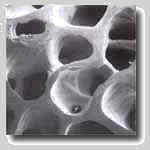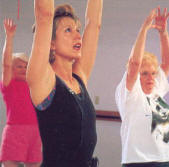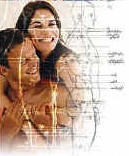|
Osteoporosis,
resulting in brittle bones, is a "silent thief" -- it robs
your bones of calcium. There are no early warning signs until the
disease results in broken bones. The skeleton becomes weakened and a
minor fall can result in a fractured hip or wrist. Bones are not
lifeless mineral deposits. Bones are constantly changing. They are
dynamic, however, after menopause. They begin to break down.
Some
Women Are at Greater Risk of Developing Osteoporosis:
These
Risks Include:
- A Family History
of Osteoporosis
- Age - the Older
You Are, the Greater the Risk
- Race - White
and Oriental Women are At Higher Risk
- Small and Thin
Women are At Greater Risk
- Smoking Increases
Your Risk
- Little or No
Exercise Increases Your Risk
- Medications
& Diseases - Cortisone or Thyroid Hormone, for Example, Can Increase
Your Risk
- Early Menopause,
Either Naturally or From Surgery.
- A Sediment
Life Style
- A Poor Diet
History
A
Natural Remedy
Imperial Gold Maca™ has been busy
making a name for itself, considered by many a miraculous aptogenic herb
(adjusts to the bodies needs), maca has outstanding properties and
should be carefully studied much more by the medical profession. This
website has a considerable amount of information that can be examined
and studied about maca for you to come to your own conclusions on how it
can benefit you.
|

Normal
Bone Tissue

Osteoporotic
Tissue

Women's
Health
Back to Top
There
are signs of late osteoporosis. They can include back pain, height loss, a
curving spine, a history of broken bones or a recent broken bone.
There
is an accurate way of determining if osteoporosis is present. It is called Bone
Densitometry. This test can often detect osteoporosis in the early stages before
broken bones occur. The test can also be used to track bone response to
treatment. Bone Densitometry is similar to an x-ray. There is also a urine test
called Osteomark®
which can help determine if bone loss is occurring at a dangerous rat
|

